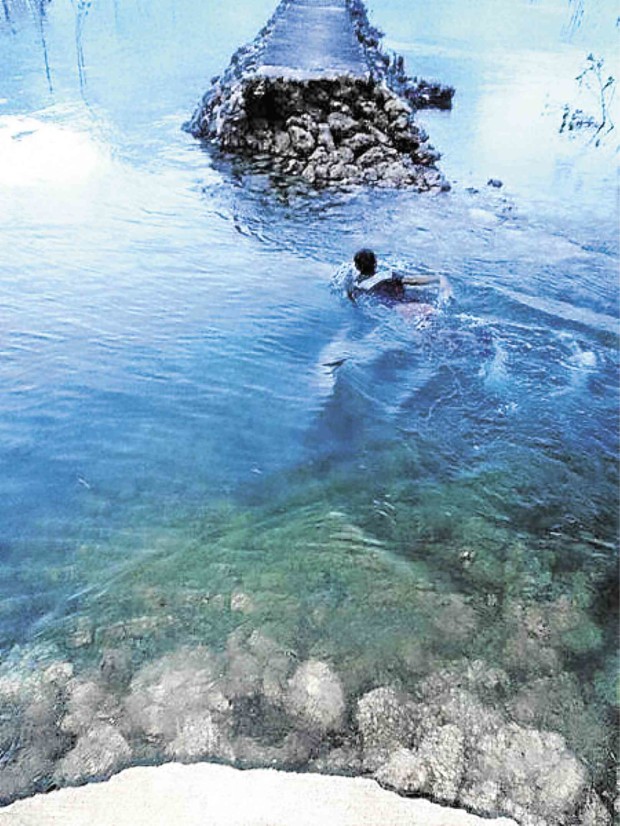For students on islets, days of swimming to school are over

A STUDENT swims to reach one end of a footbridge that was damaged by Supertyphoon “Yolanda” in the village of Molocaboc, Sagay City in Negros Occidental province. ROGER ZARSUELO ROCHAR/CONTRIBUTOR
GOING to his classes in high school no longer means a swim across the sea for Ernest Cawit. He now manages to stay dry after a 1.5-kilometer-long footbridge from the islets of Molocaboc Daku and Molocaboc Diut was rebuilt last year in Sagay City in Negros Occidental province.
“It was difficult for my classmates and I to get to school early when the footbridge was down. We all had to swim against a strong current or wait for a boat to pass and bring us to the other end,” said Cawit, a third year high school student.
Supertyphoon “Yolanda” (international name: Haiyan) whipped up a storm surge that destroyed the footbridge in 2013 and another 1.2-km-long span in Molocaboc Daku that serves as the islet’s gateway.
At least 200 students from Molocaboc Diut had to swim to get to Molocaboc High School in Molocaboc Daku, said former principal Roger Zarzuelo Rochar, who is now education program supervisor of the Department of Education’s Sagay Division Office.
3 islets
The footbridge connects the 80-hectare Molocaboc Diut, where Cawit lives, to the 210-ha Molocaboc Daku, the main island of Barangay Molocaboc. A third islet is the 20-ha Matabas.
Molocaboc is part of the 32,000-hectare Sagay Marine Sanctuary started in 1972 by then mayor and now Gov. Alfredo Marañon Jr. to restore marine life in the area once destroyed by dynamite fishing and other illegal fishing practices. It is at least six nautical miles from Vito Port in mainland Sagay and bounded in the north and east by the Visayan Sea, and in the south and west by Tañon Strait.
Rochar said high school attendance suffered as a result of the difficulty that students had to go through just to get to school.
“The students swam when there was no banca available for crossing and it was dangerous because sometimes the current was strong,” Rochar said.
Antonio Pasaylo, the barangay captain, said there were times when the water would be waist deep, allowing children to walk to school with their bags on their heads.
Humanitarian aid
Concern Worldwide, an Irish humanitarian mission, provided the P3.3 million needed for the repair of the two footbridges.
Ma. Lina Sanogal, provincial planning and development coordinator who prepared the project proposal, said the repair work originally cost P1.2 million, but the amount went up because the mission’s engineers wanted the structures to withstand strong storms.
The other Molocaboc bridge serves as a gateway to boats coming from the mainland. A docking area allows the vessels to unload and pick up passengers and goods.
The new structures helped boost the local economy and tourism, Pasaylo said. They had also become favorite spots for photo shoots of tourists during low tide, as these were submerged during high tide.
Tourists can easily go to the two islets to sample the seafood that Barangay Malocaboc is famous for. Most male villagers are into fishing while the women make shell craft.
Lanterns, chandeliers and necklaces made of shells collected from the seas surrounding the islets, as well as dried fish and “atis” (sugar apple), are also produced.
Sacks of shells were harvested for sale in nearby Cebu and as materials for the handicraft items, while sea cucumbers were processed into herbal medicines, Pasaylo said.














